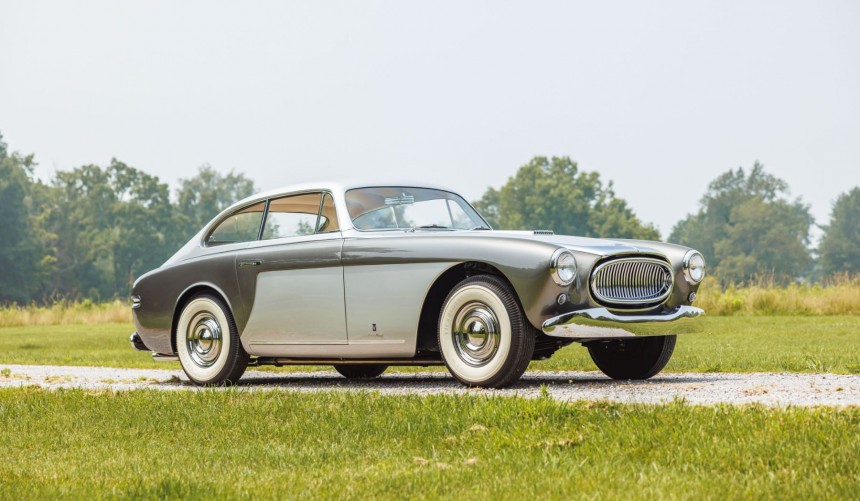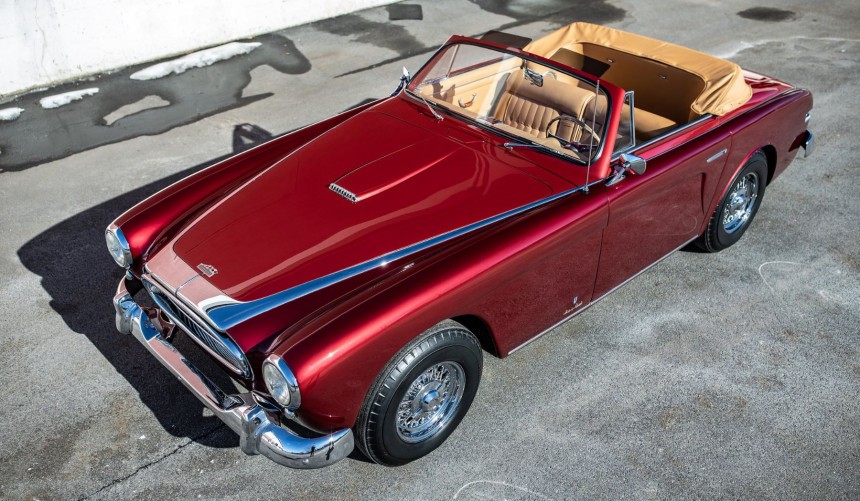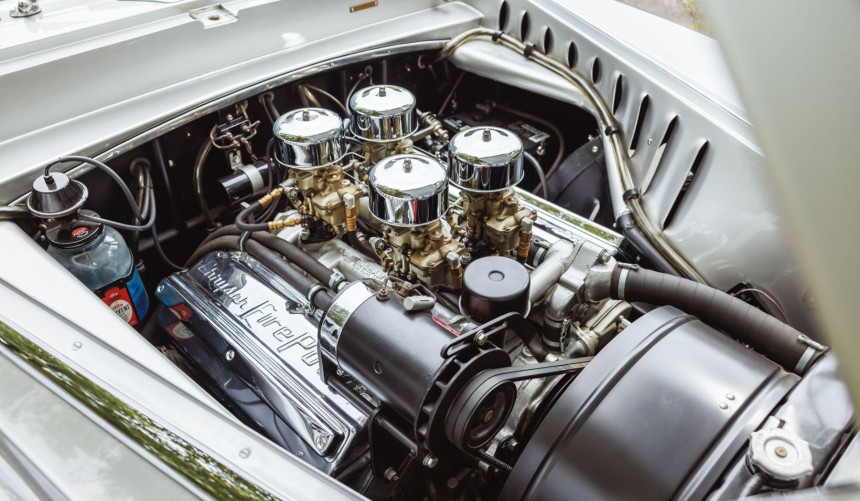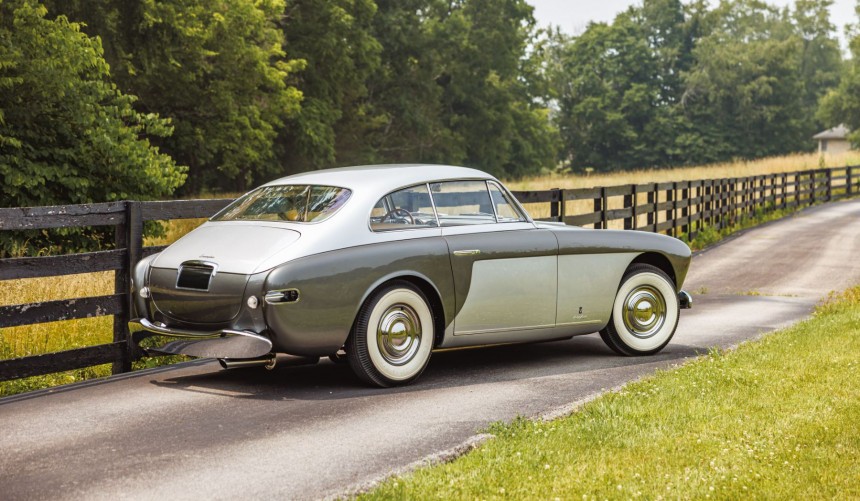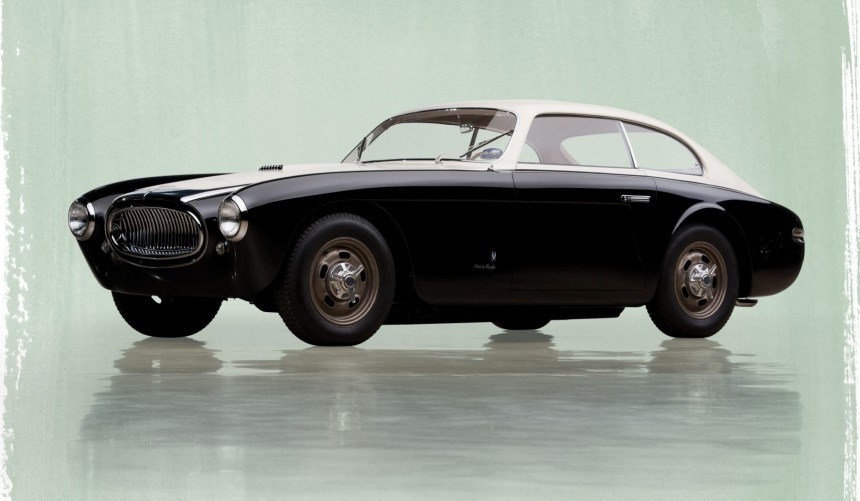Developed in the early 1950s to finance the B. S. Cunningham Company's motorsport endeavors and homologate an updated race car for the 24 Hours of Le Mans, the C-3 became one of the finest grand tourers of its era.
Born in 1907 in Cincinnati, Ohio, Briggs Swift Cunningham II fell in love with fast cars from an early age thanks to the frequent rides he took with his uncle in an aircraft-engine-powered Dodge.
As he grew older, Cunningham got into sailing, partially due to his mother's disapproval of auto racing, which she deemed way too dangerous.
His sailing career was extremely successful, but after his mother passed away, he finally got into auto racing.
In 1950, Cunningham and his team entered two Cadillacs in the 24 Hours of Le Mans, becoming the first American team to race US-built cars in the famed endurance race.
While he continued building and sailing his own ships, Cunningham also began building and racing his own cars through the B. S. Cunningham Company located in West Palm Beach, Florida.
The first bespoke Cunningham road car, a roadster dubbed C-1, was finished in late 1950. It was a one-off meant to study the viability of producing a street car, paving the way for the company's most iconic model, introduced about two years later.
Though building race cars was Cunningham's main priority, the small crew had to build a minimum of 25 road-legal cars to homologate their new track weapons for Le Mans.
Thus, after finishing the road-going C-1 and developing the C2R race car, the team began building what turned out to be one of the finest grand tourers in the world.
The C-3 utilized around a custom, hand-built ladder-type frame equipped with several off-the-shelf components.
The front suspension setup was borrowed from a 1951 Mercury, the rear was a coil-sprung Chrysler live-axle, while the drum brakes also came from a 1951 Mercury, but used additional Delco hardware.
After each chassis was completed, it was sent to Italy where Cunningham struck a deal with the famous coachbuilders Carrozzeria Vignale.
In Turin, the C-3 chassis received a hand-formed aluminum body designed by Giovanni Michelotti, the stylist responsible for some of the era's most beautiful four-wheeled masterpieces, such as the
Ferrari 166 and 212 Inter, with which the C-3 shared some similarities.
The stylish, ultra-luxurious interior was also designed and built by Vignale using some of the finest materials available at the time, such as genuine wood trims and Connolly leather.
The Vignale bodies, crafted in either a two-door coupe or two-door convertible guises, were not 100% identical from car to car. Nevertheless, each and every single one was masterfully crafted, and with their elegantly voluptuous shapes, they were a joy to behold.
After the bodies were completed and mated to the chassis, each C-3 was sent back to Florida for final assembly.
At their West Palm Beach facility, the Cunningham crew installed the drivetrain highlighted by a 331-ci (5.4-liter) Chrysler FirePower HEMI V8 that the company also used for the C2R race car.
Rated at 180 hp in stock two-barrel carbureted form, the engine received a new, in-house-developed intake manifold with four single-barrel Zenith carbs and a new, free-flowing dual exhaust system.
With these upgrades, the first-generation HEMI produced 220 hp, but potential buyers could order further upgrades like ported and polished cylinder heads or high-compression pistons, which pushed output well above the 250 hp mark.
In early C-3s, the V8 was linked to Cadillac's rugged three-speed manual, while for the rest of the cars, Cunningham used Chrysler's torque-converter-equipped M6 Presto-Matic four-speed semi-automatic gearbox.
The price for a C-3 stood around the $10,000 range, which today translates to no less than $120,127. But, despite the exorbitant price and the company's lack of prestige, wealthy enthusiasts were quick to purchase one after reading the overwhelmingly positive reviews in popular car magazines.
The C-3 was often compared to the era's most sought-after Ferraris and Bugattis in terms of comfort, quality, and performance.
Equipped with the Cadillac three-speed manual, the American grand tourer could accelerate to 60 mph (97 kph) in 6.9 seconds, blistering fast for the early 1950s.
The figure dropped to 8.5 seconds with the Chrysler semi-automatic, but the C-3 still oozed GT perfection.
The C-3 is all but forgotten by younger enthusiasts today. That's a shame since it was one of the most exciting grand tourers of its era.
On the collector market, things are different. Knowledgeable enthusiasts who are familiar with the C-3 are willing to pay big bucks to own one.
Cunningham built 25 production versions of the C-3 (the homologation minimum), of which only five were convertibles. A surviving example rarely pops up at an auction, but when it does, the winning bid usually exceeds $500,000.
The example shown above fetched $869,000 at an RM Sotheby's auction in 2014. The first C-3 pre-production prototype, it stands out due to its unique 350-hp version of the FirePower HEMI.
Of course, Jay Leno owns one, and you can watch him show it off in the episode of Jay Leno's Garage featured below.
As he grew older, Cunningham got into sailing, partially due to his mother's disapproval of auto racing, which she deemed way too dangerous.
His sailing career was extremely successful, but after his mother passed away, he finally got into auto racing.
In 1950, Cunningham and his team entered two Cadillacs in the 24 Hours of Le Mans, becoming the first American team to race US-built cars in the famed endurance race.
While he continued building and sailing his own ships, Cunningham also began building and racing his own cars through the B. S. Cunningham Company located in West Palm Beach, Florida.
The first bespoke Cunningham road car, a roadster dubbed C-1, was finished in late 1950. It was a one-off meant to study the viability of producing a street car, paving the way for the company's most iconic model, introduced about two years later.
Based on a custom, hand-build chassis
Thus, after finishing the road-going C-1 and developing the C2R race car, the team began building what turned out to be one of the finest grand tourers in the world.
The C-3 utilized around a custom, hand-built ladder-type frame equipped with several off-the-shelf components.
The front suspension setup was borrowed from a 1951 Mercury, the rear was a coil-sprung Chrysler live-axle, while the drum brakes also came from a 1951 Mercury, but used additional Delco hardware.
Dressed in a tailor-made Italian suit
In Turin, the C-3 chassis received a hand-formed aluminum body designed by Giovanni Michelotti, the stylist responsible for some of the era's most beautiful four-wheeled masterpieces, such as the
Ferrari 166 and 212 Inter, with which the C-3 shared some similarities.
The stylish, ultra-luxurious interior was also designed and built by Vignale using some of the finest materials available at the time, such as genuine wood trims and Connolly leather.
The Vignale bodies, crafted in either a two-door coupe or two-door convertible guises, were not 100% identical from car to car. Nevertheless, each and every single one was masterfully crafted, and with their elegantly voluptuous shapes, they were a joy to behold.
Powered by a beefed-up HEMI
At their West Palm Beach facility, the Cunningham crew installed the drivetrain highlighted by a 331-ci (5.4-liter) Chrysler FirePower HEMI V8 that the company also used for the C2R race car.
Rated at 180 hp in stock two-barrel carbureted form, the engine received a new, in-house-developed intake manifold with four single-barrel Zenith carbs and a new, free-flowing dual exhaust system.
With these upgrades, the first-generation HEMI produced 220 hp, but potential buyers could order further upgrades like ported and polished cylinder heads or high-compression pistons, which pushed output well above the 250 hp mark.
In early C-3s, the V8 was linked to Cadillac's rugged three-speed manual, while for the rest of the cars, Cunningham used Chrysler's torque-converter-equipped M6 Presto-Matic four-speed semi-automatic gearbox.
Drawing comparisons to the era's Ferraris and Bugattis
The C-3 was often compared to the era's most sought-after Ferraris and Bugattis in terms of comfort, quality, and performance.
Equipped with the Cadillac three-speed manual, the American grand tourer could accelerate to 60 mph (97 kph) in 6.9 seconds, blistering fast for the early 1950s.
The figure dropped to 8.5 seconds with the Chrysler semi-automatic, but the C-3 still oozed GT perfection.
The Cunningham C-3 today
On the collector market, things are different. Knowledgeable enthusiasts who are familiar with the C-3 are willing to pay big bucks to own one.
Cunningham built 25 production versions of the C-3 (the homologation minimum), of which only five were convertibles. A surviving example rarely pops up at an auction, but when it does, the winning bid usually exceeds $500,000.
The example shown above fetched $869,000 at an RM Sotheby's auction in 2014. The first C-3 pre-production prototype, it stands out due to its unique 350-hp version of the FirePower HEMI.
Of course, Jay Leno owns one, and you can watch him show it off in the episode of Jay Leno's Garage featured below.
